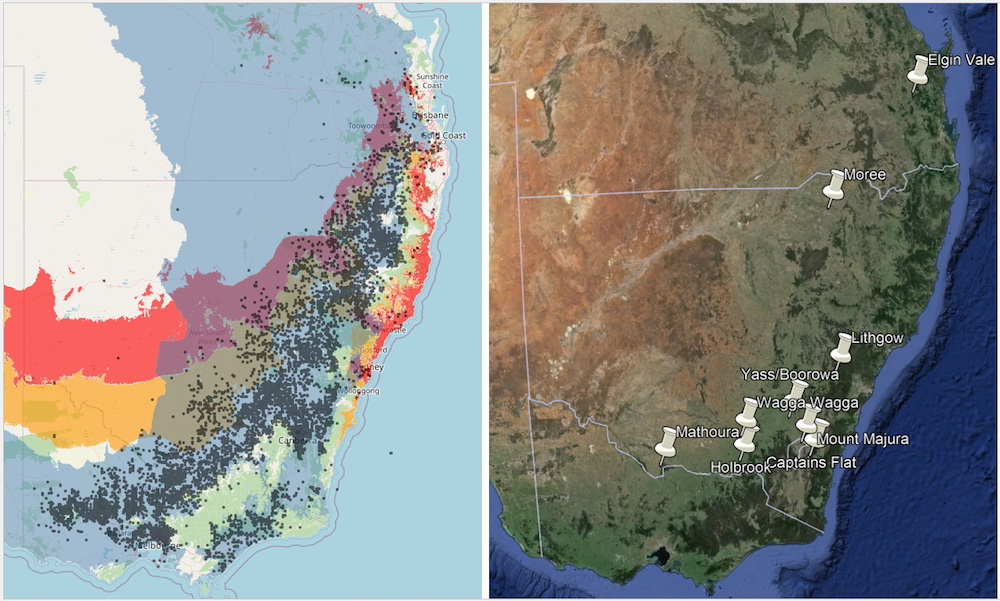When you pick up plants from one of our Yass Area Network of Landcare groups' (YAN) nurseries, it's easy to overlook the meticulous process behind species selection and seed sourcing. Each plant you take home represents a culmination of detailed work and thoughtful consideration to ensure its survival in the future climate of the Yass area. Curious about the behind-the-scenes efforts that make our Climate Ready Revegetation project possible? Read on to discover the meticulous process of species selection and seed sourcing that ensures the future survival of plants in the Yass area.
Assessing Species for Future Survival
At the centre of the Climate Ready Revegetation project is the need to determine which species are likely to thrive under future climatic conditions. Our process begins with a critical assessment: will the species survive our projected future climate?
To answer this question, we examine whether the species currently grows in regions with temperatures and rainfall patterns similar to those anticipated for the Yass area. If a species is found in such environments, it gives us confidence in its potential to survive and flourish in Yass as the climate changes.
One of the tools we use for this assessment is 'climate envelope' mapping. These maps overlay species distributions with climatic projections, providing a visual representation of where conditions today mirror the expected climate of Yass in 2070.
Case Study: Yellow Box (Eucalyptus melliodora)
Take, for instance, the Yellow Box (Eucalyptus melliodora). In the map on the left (below), black dots represent the current distribution of Yellow Box, overlaid on the projected climate envelope for Yass in 2070. The orange and red areas indicate regions with temperatures akin to what Yass will experience, while the blue area highlights regions with matching annual precipitation.
This map reveals that Yellow Box already grows in areas with climatic conditions similar to those projected for Yass, suggesting that this species is likely to thrive in the future Yass climate.

Left: Temperature (orange & red) and precipitation (blue) expected for Yass in 2070 overlayed with current distribution of Yellow Box (Eucalyptus melliodora) (black dots) Right: project seed source provenances
Ensuring Genetic Diversity
Once we identify a species capable of surviving future conditions, the next step is to source seeds from a wide range of places or 'provenances.' This diversity is crucial as it enhances the genetic variability of the plants, increasing their ability to adapt to changing climates over successive generations.
The map on the right (above) shows our seed sourcing strategy for Yellow Box. By procuring seeds from various provenances, we maximise genetic diversity. While we often rely on commercial seed businesses, which may limit precise sourcing, we strive to get seeds from as diverse a range as possible.
From Seed to Seedling
After sourcing, seeds are propagated in our YAN nurseries. The nurseries play a vital role in growing seedlings that will be distributed to local landholders. This step ensures that the plants have the best possible start, increasing the likelihood of successful establishment in revegetation sites.
The Bigger Picture
The effort put into seed selection and sourcing is an integral part of ensuring that the plants we grow today will thrive in the future. By understanding and planning for climate projections, we help landholders create resilient and sustainable landscapes that will benefit generations to come.
So, next time you visit one of our nurseries, remember the thoughtful processes that ensure the plants you take home are ready for the future. The Climate Ready Revegetation project exemplifies our commitment to biodiversity, sustainability, and community resilience in the face of climate change.
Writen by Sonya Duus, Climate Ready Revegetation Project Officer & Sarah McGrath, YAN Local Coordinator
_________________
This project has been assisted by the NSW Government through its Environmental Trust. Landcare Australia Michael King grants enable us to purchase seed from diverse provenances.
